The Ten Species Of Coots Living In The World Today
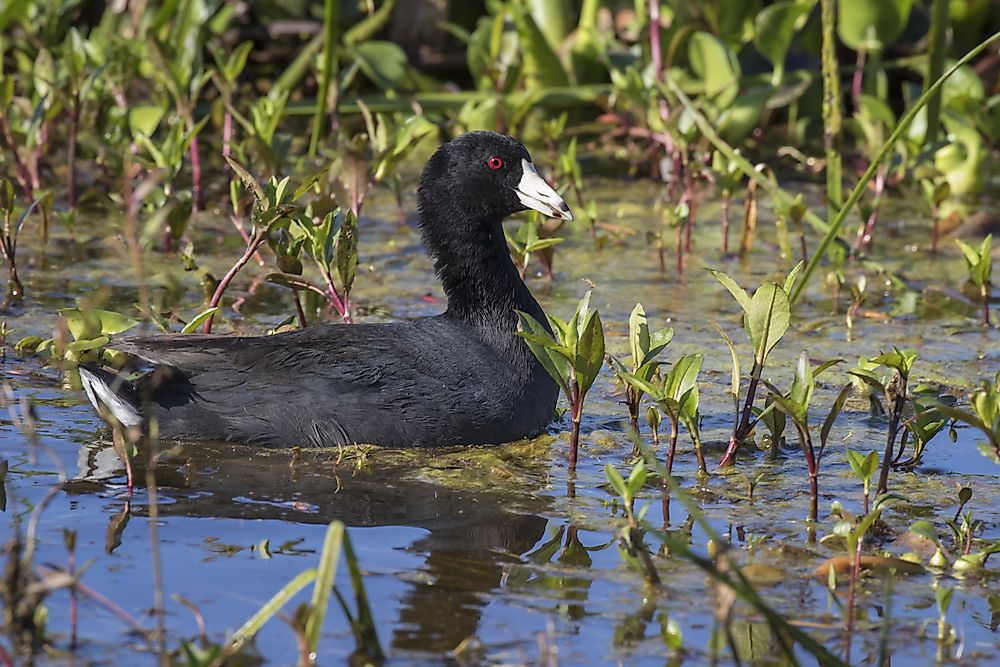
Coots are birds of the family Rallidae that belong to the Fulica genus. There are 10 extant species of coots as described below.
10. Hawaiian Coot
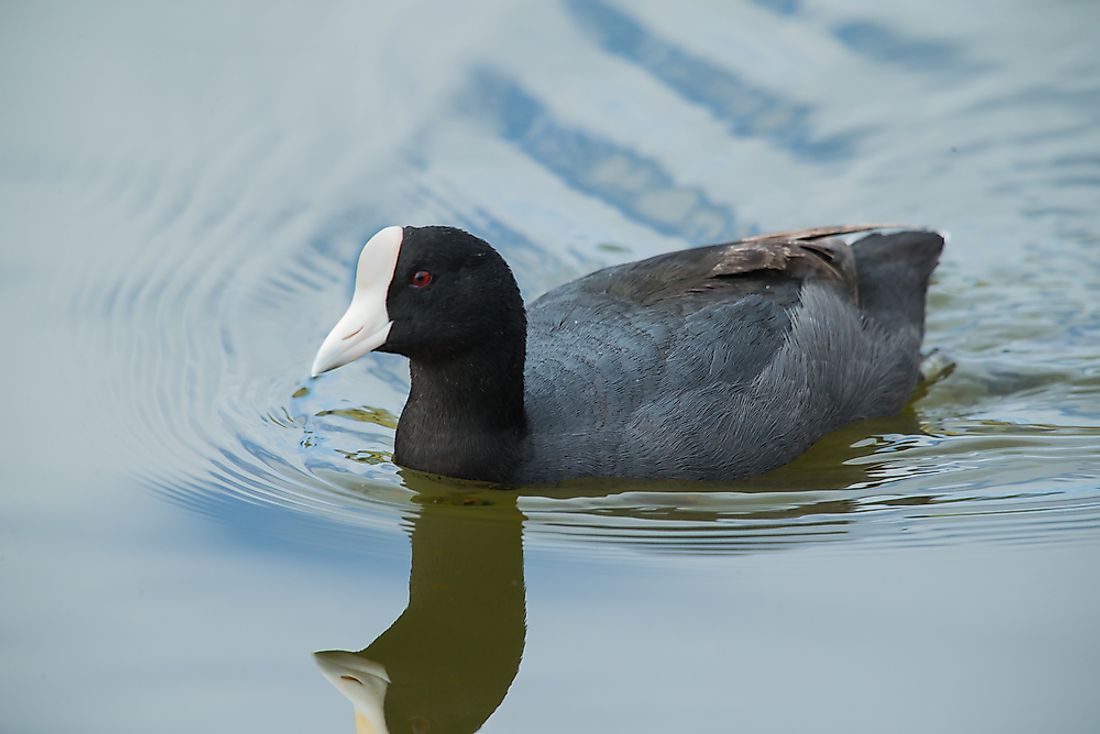
The Fulica alai is a coot species that is endemic to the islands of Hawaii. Here, the bird inhabits the freshwater lakes and ponds, marshes, and saline lagoons along the coast. The birds have a distinct white frontal crest and white bill, and overall black plumage. The length of the bird ranges from 33 to 46 cm. This species of coot is recognized as “Endangered” by the IUCN. Predation by introduced non-native predators like the Asian mongoose as well as loss of habitat are the biggest threats to the survival of this species. A small but significant population of the Hawaiian coot is protected in the Makalawena Marsh habitat of Hawaii’s Big Island. Currently, the species is listed as "Vulnerable" by the IUCN.
9. American Coot
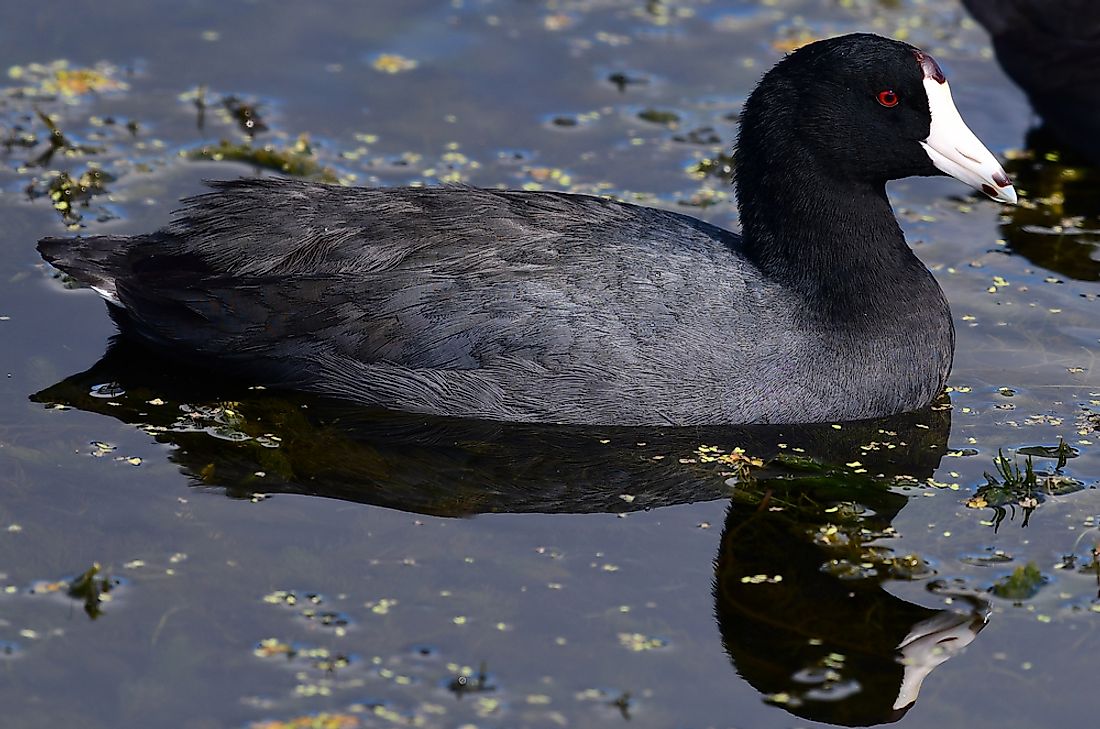
The Fulica americana breeds in the northern parts of North America and migrates as south as Panama for wintering. The bird is 34 to 43 cm long. The females of this species are smaller than the males. The bill of the bird is short, white, and thick. They also have a white-colored frontal shield. The plumage is black to dark brown in color. The birds inhabit marshes, reed-ringed lakes, and slow rivers within their range. The American coots feed mainly on algae and other aquatic plant matter. Occasionally, they also consume selective invertebrate and vertebrate species.
8. Andean Coot
The Fulica ardesiaca inhabits the freshwater lakes and swamps of the Andes. The range of these birds extends from northwestern Argentina to southwestern Colombia. The color of the frontal shield and bill of the bird varies. The most common color combination is represented by the yellow colored bill and a chestnut shield. The bill has a black spot on it.
7. Red-gartered Coot
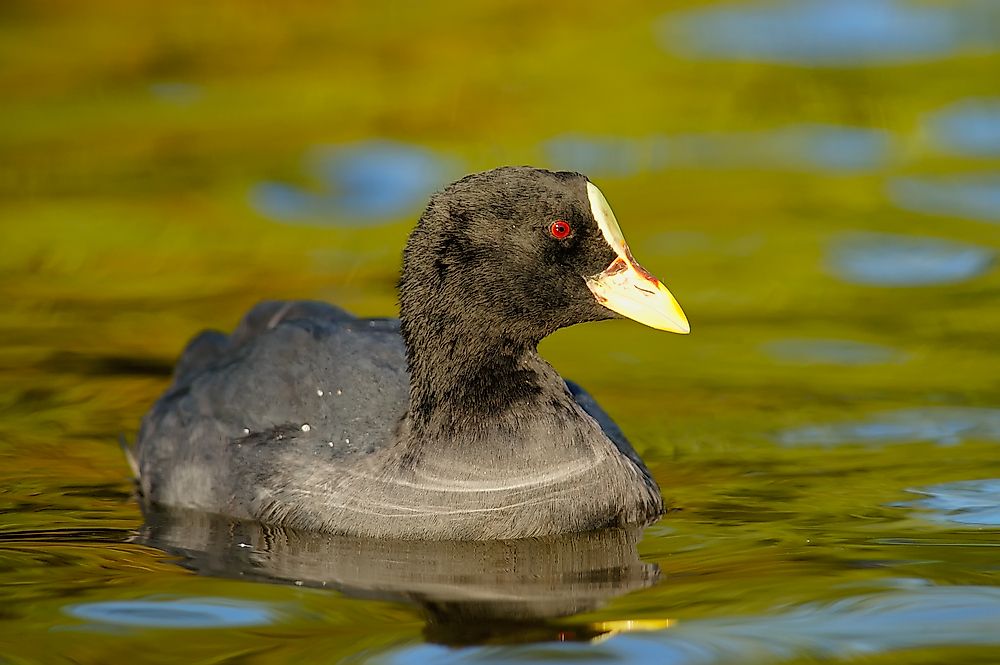
The Fulica armillata is a large coot species that inhabit the freshwater lakes and swamps in parts of South America. The length of the bird is about 45 cm. The birds are distinguished by the presence of patches of red separating the yellow frontal shield from the yellow bill. The legs of the bird also bear red markings. The coot is an omnivore that feeds on both vegetation and invertebrate prey.
6. Eurasian Coot
The Fulica atra has an extremely wide range in the Old World where it is found in Eurasia, Australia, and Africa, and recently populations have also been observed in New Zealand. The birds are 32 to 42 cm long. The Eurasian coot is largely black with a distinct white shield and white bill. The shield develops fully only after a year. The birds are extremely vocal and territorial in nature. They are also quite harsh to their young ones and thus very few offsprings survive to adulthood. The birds are omnivorous in nature.
5. Horned Coot
The Fulica cornuta lives in the high-altitude lakes of the Andes of South America. It is a large coot, being only slightly smaller than the giant coot. The size of the bird ranges from 46 to 62 cm. The horned coot has a horny shield with three wattles of which the central one is the largest. The base of the bill is dull orange in color while the rest of the bill is yellow. The legs are dull greenish in color. The birds are monogamous and breed in large colonies. They build elaborate nests on water by piling pebbles to form tiny islands that are covered by algae. The birds are recognized as Near Threatened by the IUCN.
4. Red-knobbed Coot
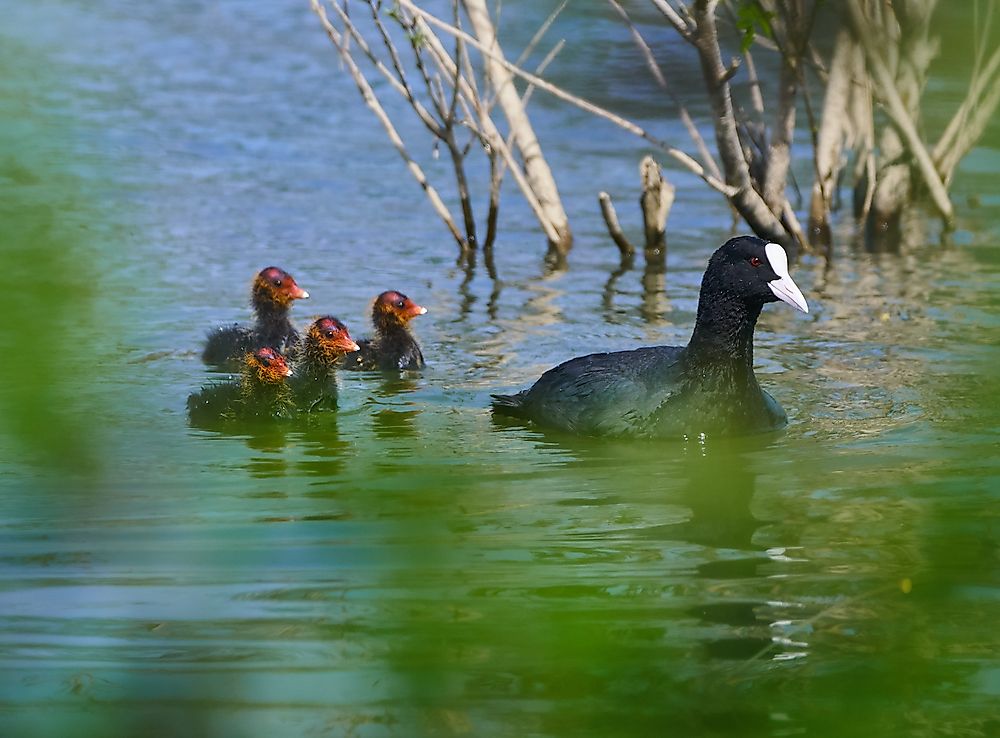
The Fulica cristata, also known as the crested coot, is a coot living in Africa and southernmost Spain as a resident breeder. The birds are 38 to 45 cm long. They have a white frontal shield with two red knobs on the top of the shield that develops during the breeding season. The white bill has a pale bluish-gray tinge. The body has black plumage. The bird appears quite similar to the Eurasian coot with which it shares its range. The crested coot is highly territorial in nature and even aggressive to its own young. The nests are built of reeds near the shore or as floating nests in water.
3. Giant Coot
The Fulica gigantea ranges in the South American Altiplano with significant populations of the bird being found in the Chungara Lake of Chile’s Lauca National Park. The bird is large in size and has red legs and feet. The bill of the bird is multi-colored. The birds build large platform nests using vegetation obtained from the lake bed or stolen from neighbors. The birds never nest in colonies as they are highly territorial in nature. The giant coots are monogamous in nature. It makes a lot of noise during the breeding season.
2. White-winged Coot
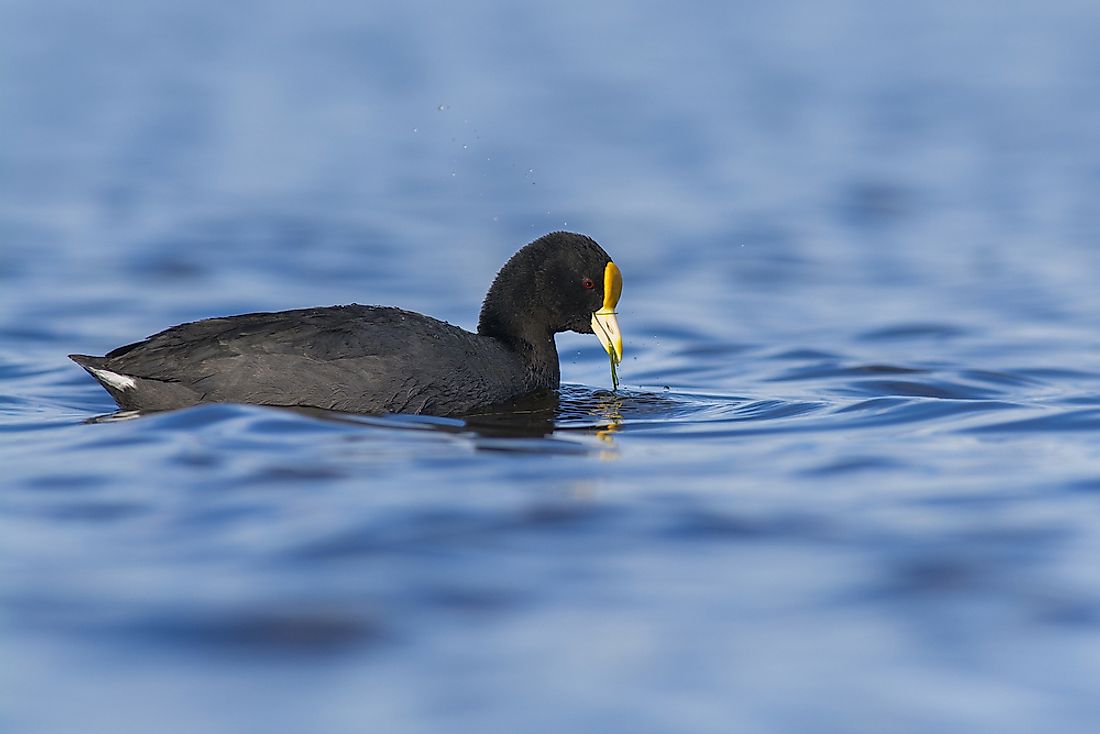
The Fulica leucoptera is a medium-sized coot with a length of about 35 to 43 cm. The bird ranges in southern South America where its presence is observed as far north as southern Brazil and Bolivia. Within its range, the bird inhabits vegetated lakes and swamps. The coot is blackish in color while the undertail coverts are white. The bill is yellow to greenish yellow in color. The frontal shield is orange-red. The bird uses vegetation to build platform nests.
1. Red-fronted Coot
The Fulica rufifrons is a mid-sized coot species that lives in the swamps and vegetated water bodies of South America. The size of the bird ranges between 36 and 43 cm. The coot species is shy in nature and prefers to swim and forage under cover. These birds resemble the moorhen in many aspects. They have a long tail, a red-colored frontal shield and a yellow bill with a red base.











